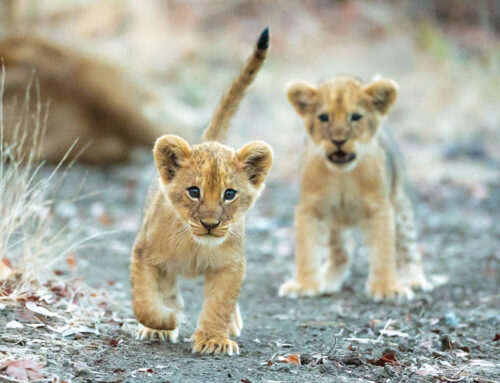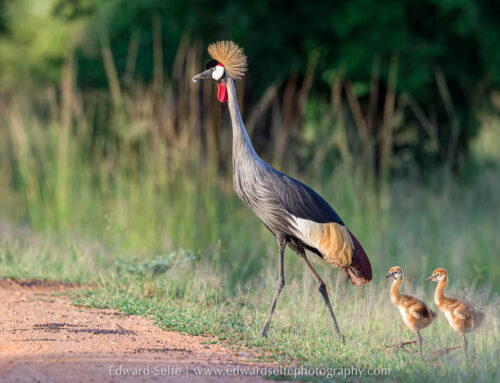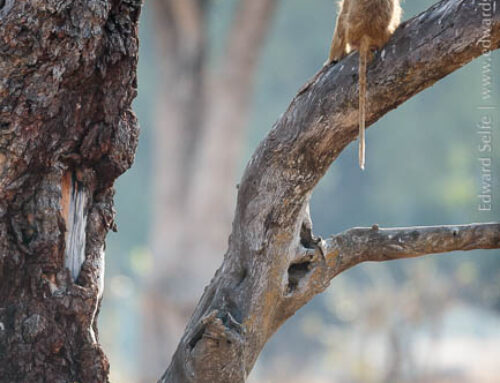There are two species of Oxpeckers; Luangwa is home to both the Red-billed and the Yellow-billed varieties. In Luangwa, as their name suggests, they can be found ‘pecking’ at bovine mammals such as buffalo. But they are also regularly found on giraffe, eland, zebra, warthog, impala, hippo and kudu where they glean parasites – such as ticks, fleas and lice – from their hides.
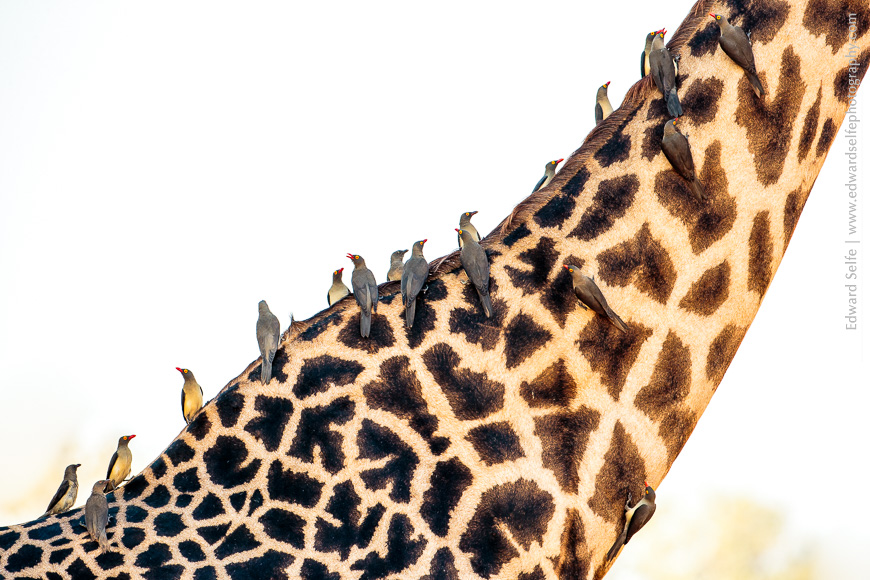
These starling-relatives are highly adapted to their role: broad scissor-like bills facilitate a combing action through the host’s coat and long tails work with sharp claws to keep them ‘propped’ on the host’s body, even when hanging upside down.
Initially, their call – a rasping kshh kshh – is not noticed, but once heard, provides a reliable warning to humans of a large mammal nearby. Of course, the host mammal is very attuned to the birds’ call and enjoys the early warning that it provides of an approaching predator such as lion, leopard or human!
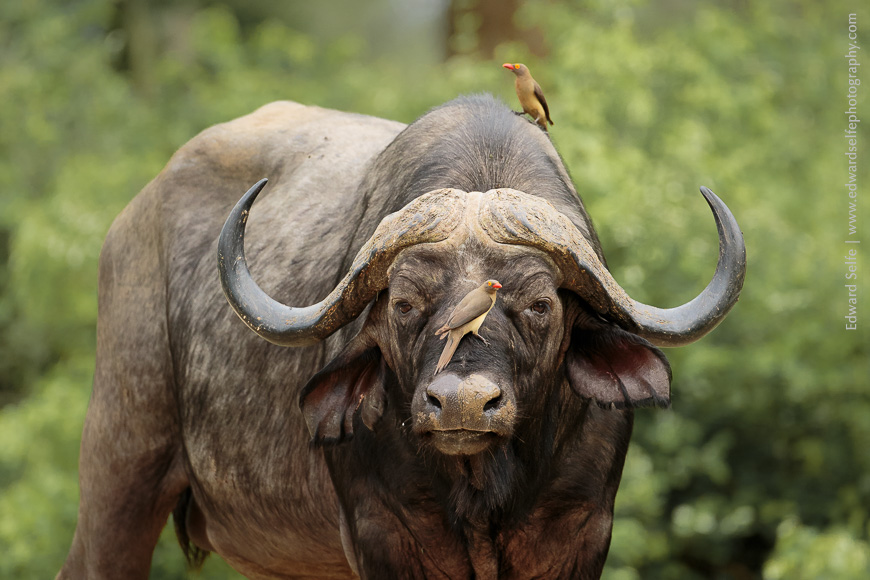
Such is the trust and relationship, that buffalo and zebras will allow these birds to enter their outer ears, clearing ticks from within the lobe. It’s not uncommon to find the birds feeding in sensitive places and being displaced when they overstep the mark!
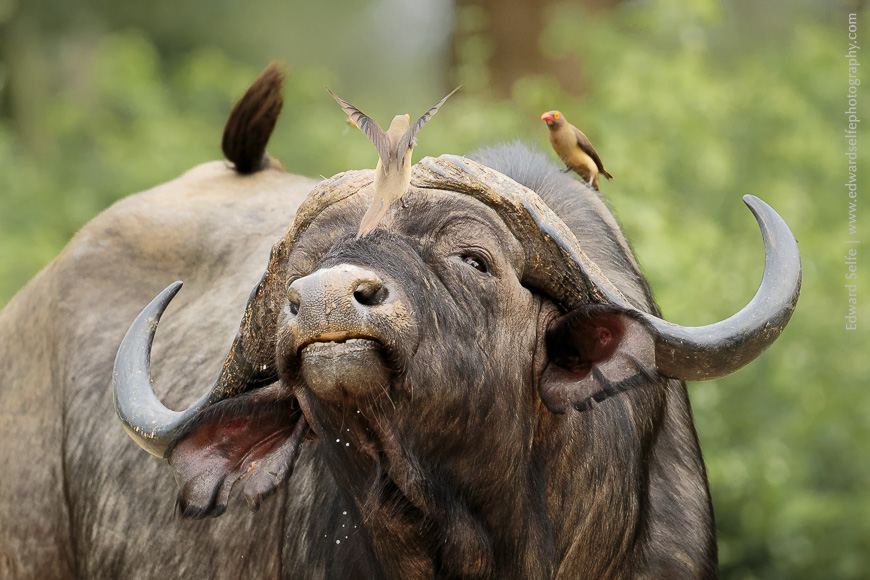
When approached closely, Oxpeckers churr loudly, often taking refuge on the far side of the mammal, peering over the top of to view the approaching danger. When their flight distance is reached, they fly off as a cloud, moving either to another host, or to the refuge of a tree.
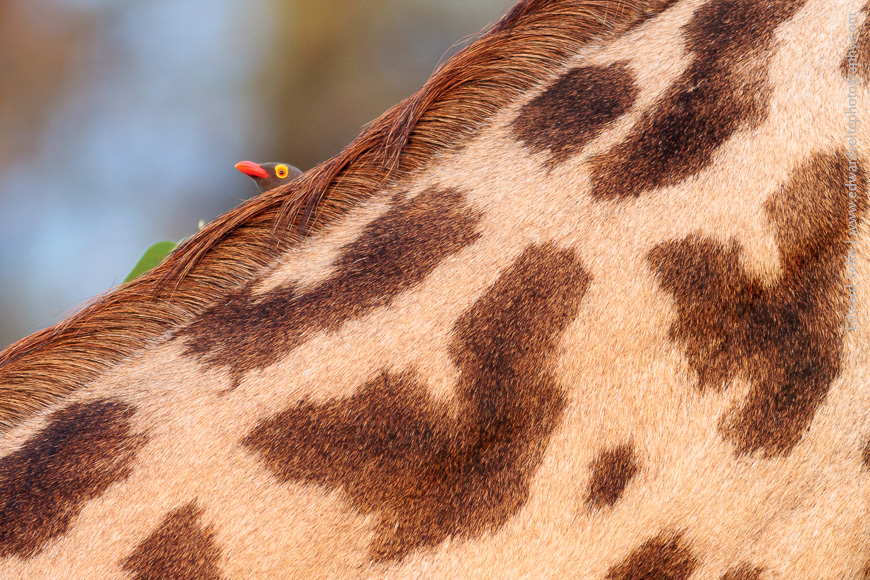
Interestingly, several books report that they sleep on the backs of their hosts – especially kudu and giraffe, and less so buffalo – but I have rarely observed this. More commonly, I have found them emerging from tree holes and seeking out new hosts each morning.
It’s also not known why some host species are preferred over others, and why some are avoided altogether. Rhinos of both species are hosts, as are hippos, but elephants are not targeted and don’t tolerate the birds.
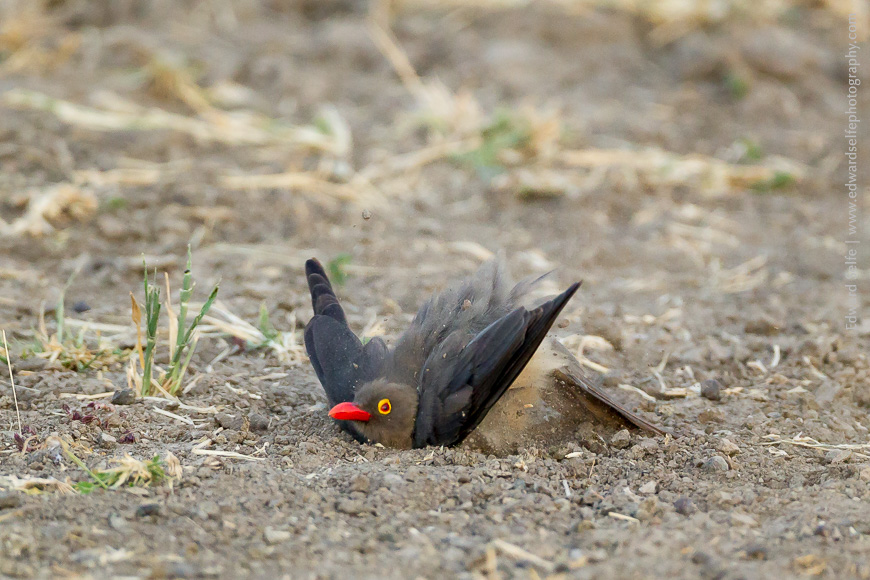
Ironically, Oxpeckers themselves have to remove their own ectoparasites, despite making a living offering the service to others. They’ll regularly be found dust-bathing in a patch of loose soil, often in a spot where elephants have dusted themselves too.
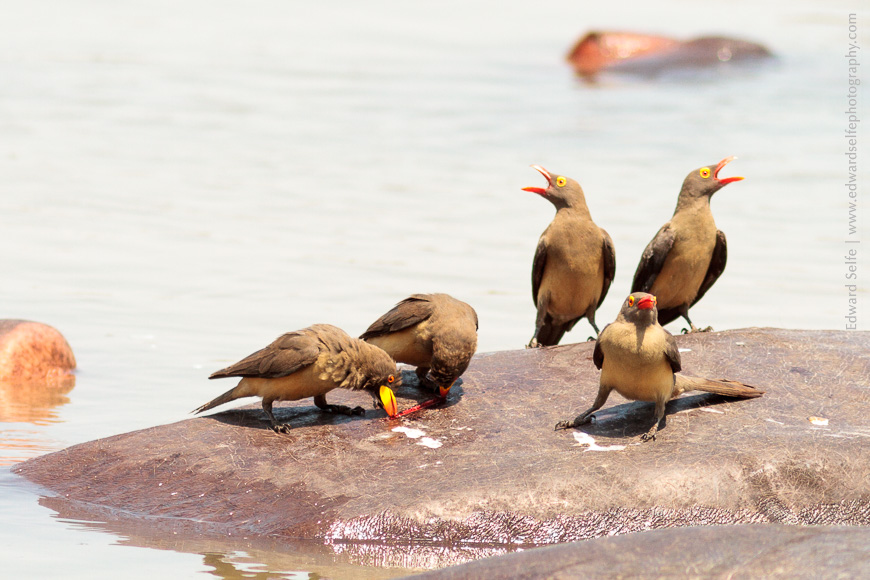
During the dry season, congregations of hippos in the drying river offer one of the best spots to observe these birds. At this time of year, hippos travel vast distances in search of food and presumably pick up large numbers of parasites along the way. Each morning, Oxpeckers throng to clear up which often results in scuffles over the best morsels!
Oxpeckers also feed on mammal tissue and are regularly seen picking at wounds on their hosts. This often irritates the mammals and it’s still debated whether this process helps the wound heal (by removing maggots and dead tissue) or prevents healing (as it does when you continually pick at a scab!). Either way, these charismatic birds enjoy any chance to feed from the new wounds that hippos sustain on a daily basis during the dry season!
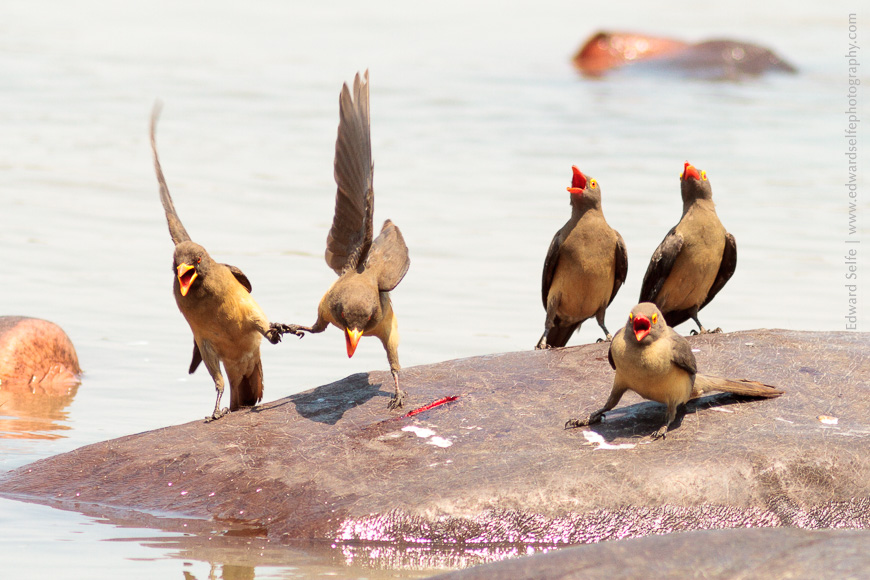
Oxpeckers can be seen year-round in the Luangwa – whether emerging from their animal hair and dung-filled tree hole nests or catching the morning sun on the rumps of Cape buffalo – and add an interesting dimension to mammal watching on safari!

